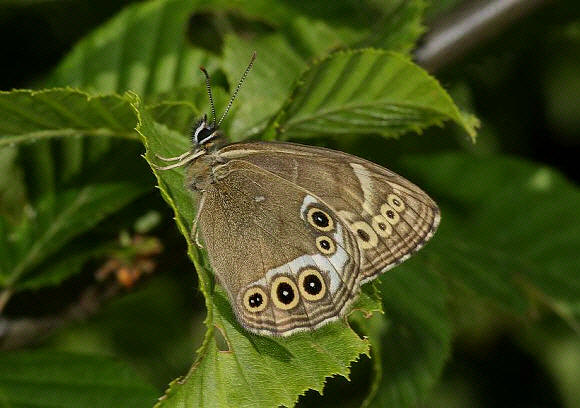 Woodland Brown Lopinga achine – Peter Bruce-Jones
Woodland Brown Lopinga achine – Peter Bruce-Jones
Introduction
The genus Lopinga comprises of only 4 species. All have their core populations in China, which is where the genus probably evolved. Two have been adaptable enough to be able to expand their ranges westward – deidamia, which reaches the Ural mountains; and achine, which has managed to spread as far west as the Pyrenees.
In Europe Lopinga achine is a declining species, generally regarded as scarce, but can be locally common in parts of Switzerland, Hungary and Croatia.
Habitats
This species is found in grassy woodland edge habitats at elevations between about 200-1500m.
Lifecycle
The adult flight period is from mid-June to early July.
The eggs are laid on the blades of grasses growing in dappled sunlight, usually close to trees or bushes. The larvae hatch in mid-July, feed for a few weeks, and then hibernate at the base of grass clumps. They awaken in the spring, resume feeding, and become fully grown by late May.
In its final instar the caterpillar is light green, with a prominent white stripe running beneath the spiracles along the abdominal segments, and a series of very fine lines running along the length of the back. The body and head are sparsely covered in short whitish hairs.
The larval foodplants are grasses and sedges, but the exact species used for oviposition apparently varies from site to site. In France Brachypodium sylvaticum and B. pinnatum are thought to be the primary foodplants, but field observations by Bergman showed that at a site in Sweden 85% of larvae there fed on Carex montana. Some were found also on Dechampsia cespitosa but the latter had a high mortality rate.
Adult behaviour
Males feed either singly or in small groups, at sources of mineralised moisture including seepages, urine-tainted soil, dry river beds and dung. Females are more secretive in behaviour but have been recorded feeding at aphid secretions on the leaves and buds of various trees.
